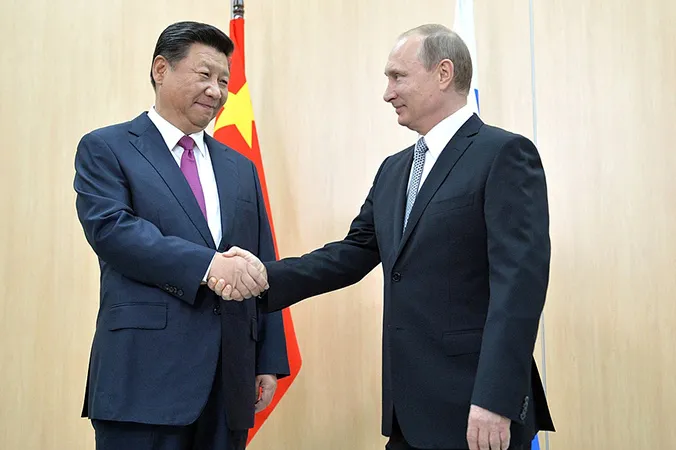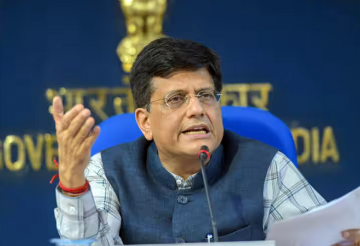
Russia announced its ‘turn to east’ in 2010. However, it was four years later in 2014 that the country’s shift towards Asia gained momentum. As the West and Russia drifted apart over the Ukraine issue, Russia’s bonhomie with China gained pace. Since then, the debate on the durability of Sino-Russian ties has continued given their fundamental differences and not so amicable history.
A Sino-Russian Entente?
While Russia and China cannot be classified as traditional friends, mutual needs have brought the two closer in recent years. It goes without saying that the current geopolitical scenario has worked in China’s favour.
China is geographically as well as economically the most viable partner for Russia. It is already among Russia’s biggest trading partners. Bilateral trade between the two countries, which amounted to $15.8 billion in 2003, was over $88 billion and $95.3 billion in 2013 and 2014 respectively. After a relative decline in 2015 ($64.2 billion), trade picked up again in 2016 ($70billion). Both nations are now aiming to take their bilateral trade to $200 billion by 2020.
As an expanding economy, China has a great demand for natural resources. Cooperation with Russia gives the country better access to the resource rich Russian Far East. A case in point is the natural gas deal signed between the two in 2014. As Russian tensions with the West peaked, Russian gas giant Gazprom and China National Petroleum Corporation (CNPC) signed a 30-year gas contract worth $400 billion where Gazprom gave in to demands of lower prices by China.
Another high point in Sino-Russian relations was Russia’s resumption of advanced arms technology sale to China after almost a decade of an “informal ban on exports of high technology military equipment” following China’s replication of Russian weapons designs. The most notorious example in this regard was China’s development of the J-11B fighter, which was alleged to be “a direct copy of the Su-27, a one-seat fighter that was developed by the Soviets through the 1970s and 1980s as a match for the U.S. F-15 and F-16.” Russia did not take China’s reverse engineering well especially since the latter began exporting much of the cloned weaponry at cheaper prices, adversely affecting Russia’s stake in the developing world market.
Read also | < style="color: #960f0f">Decoding China’s new threat from ISIS
Despite the current rapprochement, Russia remains wedged between its needs and concerns in its dealings with China. Assertive Chinese moves in the South and the East China Sea, for instance, raise concerns about Chinese ambitions in the region. This holds special significance at a time when Beijing is investing in developing the Silk Road to extend its influence connecting China to the Middle East and Europe. In addition, there are concerns regarding Russia’s subordinate status in dealing with China, given that its exports to China chiefly constitute raw materials (oil, coal, and timber). On the other hand, it imports manufactured products (machinery and transport equipment).
Irrespective of this asymmetry, Russia has drawn closer to China, largely owing to a mutually beneficial demand-supply relationship. The ultimate testing ground of this entente lies in Central Asia- the locus of a ‘new great game’. Russia treats Central Asia as its own backyard but is drawn to China economically due to the latter’s proposed investments under its ambitious One Belt and One Road (OBOR) Initiative. Additionally, Russia’s demographically sparse Far East is vulnerable too, prompting concerns of China’s growing influence in the region.
The Trump Era
One of the prominent aspects of Donald Trump’s foreign policy re-orientation remains his alleged ‘reset’ with Russia. It has led commentators to draw parallels with Nixon and Kissinger’s triangular diplomacy that reaped the benefits of the Sino-Soviet split in the late 1960s by opening to China. Proponents of this approach place Moscow where Beijing was positioned in the previous century.
While the present scenario does evoke memories of the 1970s, the geopolitical realities make it difficult for such a strategy to work for various reasons. First, the US-Soviet-China triangle essentially favoured the US because China was increasingly becoming adversarial towards the Soviet Union. Moreover, the deep ideological fissures that drove the Soviet Union and China apart during the late 1950s and 1960s do not exist today. In fact, overcoming their tumultuous history Moscow and Beijing now profess a “strategic partnership” with shared political, economic and security interests.
Though Washington under Donald Trump has shown an inclination towards resetting ties with Moscow, the probability of latter's reorientation towards the West akin to Yeltsin years remain bleak under Putin. This is especially so because Moscow's misgivings about NATO surpass its concerns about Beijing. Though Sino-Russian geopolitical competition certainly exists, the working relationship between the two (at least under Putin and Xi Jinping’s leadership) is likely to remain balanced. More importantly, both prefer a multipolar world rather than a US dominated order. Russian Foreign Minister, Sergey Lavrov’s speech at the recently concluded Munich Security conference where he spoke of a ‘post-West’ order further corroborates this assumption.
Read also | < style="color: #960f0f">Chinese regional hegemony is a bridge too far
And finally, though Russia and China may nurture divergent interests, their mutual interest of challenging the US led order would prevent them from going against each other in the near future. This arrangement certainly carries weight in the short term. The feasibility of the long-term feasibility of such an arrangement , however, depends on the extent to which Russia is able to rebalance its ties with Asia. While it definitely lacks China’s economic might, Russia has emerged as a consequential security actor visibly demonstrated by its intervention in Syria. It now eyes Afghanistan in the same vein as it did Syria in its quest to reassert its influence in the region. This is a more complex and limiting process as long as India, its traditional partner, remains wary of its cooperation with China and increasingly Pakistan.
The views expressed above belong to the author(s). ORF research and analyses now available on Telegram! Click here to access our curated content — blogs, longforms and interviews.




 PREV
PREV



